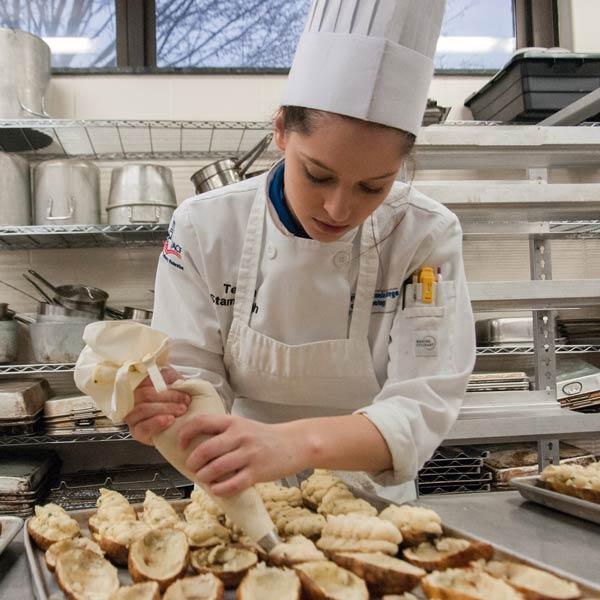Pollaste, a lesser-known yet highly nutritious food, has been gaining attention for its myriad health benefits and versatile culinary uses.
Pollaste refers to a type of poultry commonly known as capon, specifically a castrated rooster. “pollaste” is derived from the Spanish word “pollo,” which means chicken or rooster. In culinary contexts, pollaste is often associated with a particular method of preparing and cooking poultry to enhance its flavor and tenderness.
This guide explores everything you need to know about pollaste, from its nutritional value to its role in different cultures and cuisines.
Historical Background:

Historically, capons were highly regarded in various cuisines worldwide, especially in Europe and Asia. Due to their premium quality and unique taste, they were often served as a delicacy during feasts and special occasions.
Capons were valued for their flavor and tender texture, making them a preferred choice for roasting and other elaborate cooking methods.
In ancient Rome, capons were considered a symbol of wealth and luxury, reserved for the tables of the elite. They were also prized for their supposed medicinal properties and were believed to have aphrodisiac effects.
Throughout history, capons remained popular in culinary circles, with various recipes and cooking techniques developed to showcase their distinct qualities.
However, with changes in agricultural practices and preferences for poultry, the production of capons has declined in many regions, although they continue to be enjoyed by those who appreciate their unique taste and texture.
Nutritional Value of Pollaste
Macronutrients:
- Protein: Pollaste is a rich source of high-quality protein, essential for muscle building, repair, and overall growth and development.
- Fat: While the fat content of pollaste can vary depending on factors such as preparation method and cut, it generally contains moderate levels of healthy fats, including unsaturated fats.
- Carbohydrates: Pollaste is low in carbohydrates, making it suitable for low-carb or ketogenic diets.
Micronutrients:
- Vitamins: Pollaste is a good source of various vitamins, including B vitamins such as B6 and B12, which are important for energy metabolism, nerve function, and red blood cell production. It also contains vitamins like niacin, riboflavin, and pantothenic acid.
- Minerals: Pollaste provides essential minerals such as iron, zinc, phosphorus, and selenium, which play crucial roles in immune function, bone health, and antioxidant defense. Iron, in particular, is important for oxygen transport in the blood and preventing iron deficiency anemia.
- Other Nutrients: Pollaste also contains nutrients like choline, which is important for brain health and fetal development during pregnancy.
The nutritional composition of pollaste can vary depending on factors such as the specific cut of meat, cooking method, and any added ingredients or seasonings. Pollaste is a nutrient-dense food that can contribute to a balanced and healthy diet when consumed as part of a varied meal plan.
Read: Gidler – What You Need To Know!
Health Benefits of Pollaste
Boosts Immune System:
Pollaste contains essential nutrients such as vitamins A, C, and E, zinc, and selenium, which play crucial roles in supporting the immune system. These nutrients help produce white blood cells, key immune response components, and act as antioxidants, protecting the body from harmful free radicals.
Supports Digestive Health:
Rich in protein and relatively low in fat, pollaste can be a good protein source that is easier to digest than other meats. Additionally, it contains nutrients like vitamin B6 and niacin, which play roles in the metabolism of carbohydrates, proteins, and fats, supporting overall digestive function.
Enhances Skin Health:
The vitamins and minerals in pollaste, such as vitamin A, zinc, and selenium, contribute to skin health. Vitamin A is essential for skin cell growth and repair, while zinc helps maintain the skin’s structure and supports wound healing. Selenium acts as an antioxidant, protecting the skin from oxidative damage.
Promotes Heart Health:
Pollaste is a lean source of protein and contains less saturated fat compared to some other meats, making it a heart-healthy choice. Additionally, it provides nutrients like niacin, which helps to lower cholesterol levels and promote cardiovascular health.
Omega-3 fatty acids in some poultry products may also contribute to heart health by reducing inflammation and lowering the risk of heart disease.
Anti-inflammatory Properties:
Certain nutrients in pollaste, such as vitamin E and omega-3 fatty acids, possess anti-inflammatory properties.
These nutrients help to reduce inflammation in the body, which is linked to various chronic diseases, including heart disease, diabetes, and arthritis. Consuming pollaste as part of a balanced diet can help to modulate inflammation and promote overall health.
Culinary Applications

Traditional Delicacies: Pollaste in Global Cuisine
Pollaste is significant in traditional culinary practices worldwide, with its rich flavor and tender texture making it a sought-after ingredient in various cultures. Across the globe, pollaste has been incorporated into numerous traditional dishes, serving as a centerpiece for festive occasions and everyday meals.
Its versatility allows for a wide range of preparations, from hearty stews to elegant roasts, reflecting the diverse culinary traditions of different regions.
Pollaste in Spanish Cuisine: A Rich Tradition
In Spanish cuisine, pollaste boasts a long-standing tradition deeply rooted in the country’s culinary heritage. From celebratory feasts to family gatherings, pollaste takes center stage in many iconic Spanish dishes, cherished for its succulent taste and melt-in-your-mouth texture.
Whether roasted to perfection with aromatic herbs or simmered in rich sauces, pollaste showcases the essence of Spanish gastronomy, captivating both locals and visitors with its exquisite flavor profiles.
Pollaste Around the World: Cultural Variations and Culinary Delights
As pollaste transcends borders, its presence in global cuisine reflects a tapestry of cultural influences and culinary delights. From the vibrant flavors of Asian cuisine to the aromatic spices of African and Middle Eastern dishes, pollaste undergoes myriad interpretations, each offering a unique gastronomic experience.
Whether grilled over open flames, braised in fragrant broths, or infused with exotic spices, pollaste continues to captivate palates worldwide with its versatility and charm.
Read: Divijos: Exploring The Mystique Of A Cultural Enigma
Modern Interpretations: Innovative Ways to Incorporate Pollaste in Cooking
In modern cuisine, chefs and home cooks alike are embracing pollaste with innovative flair, reimagining traditional recipes and pushing the boundaries of culinary creativity.
From contemporary fusion dishes that blend global flavors to health-conscious options that cater to modern dietary preferences, pollaste finds new expression in light and inventive preparations.
With a focus on fresh ingredients and inventive techniques, modern interpretations of pollaste breathe new life into this timeless ingredient, ensuring its relevance in today’s culinary landscape.
Signature Dishes: Chef’s Recommendations and Recipes
Renowned chefs offer expert recommendations and signature recipes for culinary enthusiasts seeking to elevate their pollaste dishes to gourmet heights.
Drawing from years of experience and culinary expertise, these chefs share insider tips and techniques for achieving perfect results every time.
From classic preparations with a twist to avant-garde creations that push the boundaries of flavor and presentation, these signature dishes showcase the endless possibilities of pollaste in the hands of skilled culinary artisans.
Pollaste in Fusion Cuisine: Blending Flavors and Techniques
In fusion cuisine, pollaste is a canvas for culinary experimentation, blending flavors and techniques from diverse culinary traditions.
From innovative pairings that marry contrasting flavors to creative cooking methods that fuse traditional and contemporary techniques, pollaste in fusion cuisine offers a sensory journey unlike any other.
With an emphasis on bold flavors, imaginative combinations, and artistic presentation, pollaste in fusion cuisine embodies the spirit of culinary innovation, inviting diners to embark on a culinary adventure that transcends cultural boundaries.
Buying and Cooking Tips

Selecting the Best Pollaste: Factors to Consider When Purchasing
When purchasing pollaste, several factors must be considered to ensure you select the best-quality bird. Look for fresh pollaste with firm, plump flesh and a sweet aroma.
Avoid any signs of discoloration, excessive bruising, or off-putting odors, as these may indicate spoilage. Additionally, opt for pollaste from reputable suppliers or local farmers’ markets to support sustainable and ethical farming practices.
Cooking Techniques: Mastering the Art of Pollaste Preparation
Mastering the art of pollaste preparation begins with understanding the different cooking techniques that best highlight its flavor and texture. Whether you’re roasting, grilling, or braising, each method offers unique benefits and opportunities for culinary creativity.
Experiment with various cooking techniques to discover your preferred method for preparing pollaste and achieving delicious results every time.
Roasting, Grilling, and Braising: Optimal Methods for Flavorful Results
Roasting, grilling, and braising are three classic cooking methods that bring out the best in pollaste, each imparting its distinct flavor and texture.
Roasting pollaste in the oven at a moderate temperature allows for even cooking and crisp, golden skin while grilling over an open flame adds a smoky char and caramelized exterior. Braising pollaste in a flavorful liquid, such as broth or wine, results in tender, succulent meat infused with rich, savory flavors.
Experiment with these techniques to find your preferred cooking method for pollaste dishes that impress every palate.
Seasoning and Marinades: Enhancing Pollaste’s Natural Taste
Enhance the natural taste of pollaste by seasoning it with various herbs, spices, and marinades that complement its flavor profile.
Whether you prefer classic combinations like garlic and rosemary or more exotic blends featuring citrus and ginger, seasoning and marinades add depth and complexity to pollaste dishes.
Be sure to season pollaste generously with salt and pepper before cooking to enhance its natural flavors, and consider marinating it for several hours or overnight to infuse the meat with additional flavor and tenderness.
Safety Precautions: Handling and Storage Guidelines for Fresh Pollaste
- To prevent bacterial growth and spoilage, store fresh pollaste in the refrigerator at or below 40°F (4°C).
- Use pollaste within a few days of purchase to maintain optimal flavor and texture.
- When handling raw pollaste, wash your hands thoroughly before and after contact to prevent cross-contamination.
- Avoid cross-contamination by keeping pollaste separate from other foods, especially those that won’t be cooked.
- Cook pollaste to an internal temperature of 165°F (74°C) to ensure it is safe to eat and free from harmful bacteria.
- Refrigerate any leftover pollaste promptly to minimize the risk of foodborne illness.
FAQs
1. How Does Pollaste Differ From Other Types Of Poultry?
Pollaste stands out for its unique flavor and tender texture, which are attributed to the caponization process, which involves castrating roosters at a young age. This results in meat that is more succulent and flavorful than standard poultry.
2. What Are The Nutritional Benefits Of Pollaste?
Pollaste is a nutrient-rich food, high in protein and essential vitamins and minerals such as iron, zinc, and B vitamins. It is also lower in fat compared to other poultry varieties, making it a lean protein option for health-conscious consumers.
3. How Is Pollaste Used In Cooking?
Pollaste is versatile and can be prepared using various cooking techniques such as roasting, grilling, and braising. It is often used in traditional dishes in Spanish cuisine and can also be incorporated into modern fusion recipes to add depth of flavor.
4. Where Can I Buy Pollaste?
Pollaste is typically found at specialty butcher shops, farmers’ markets, and select grocery stores. Depending on the retailer, it may be available fresh or frozen.
5. What Are Some Safety Precautions To Keep In Mind When Handling Pollaste?
When handling raw pollaste, it’s important to practice good food safety habits, such as washing hands thoroughly before and after contact and avoiding cross-contamination with other foods. Pollaste should be cooked to an internal temperature of 165°F (74°C) to ensure it is safe to eat.
6. Can I Freeze Pollaste For Later Use?
Yes, pollaste can be frozen for later use. To prevent freezer burn, it should be properly wrapped or stored in an airtight container. To maintain its quality, frozen pollaste should be thawed in the refrigerator before cooking.
7. Are There Any Cultural Or Regional Variations In Pollaste Preparation?
Yes, pollaste is enjoyed in various cultural cuisines worldwide, each with unique preparation methods and flavor profiles. Spanish cuisine has a rich tradition of using pollaste in festive and celebratory dishes.
Conclusion:
In conclusion, pollaste has a rich history, diverse cultural significance, and unparalleled nutritional benefits. From its origins as a traditional delicacy to its modern interpretations in fusion cuisine, pollaste continues to captivate food enthusiasts with its tender texture and exquisite flavor profiles.
Whether enjoyed in classic Spanish dishes or innovative creations by renowned chefs, pollaste offers a unique culinary experience that transcends cultural boundaries.
Read:
